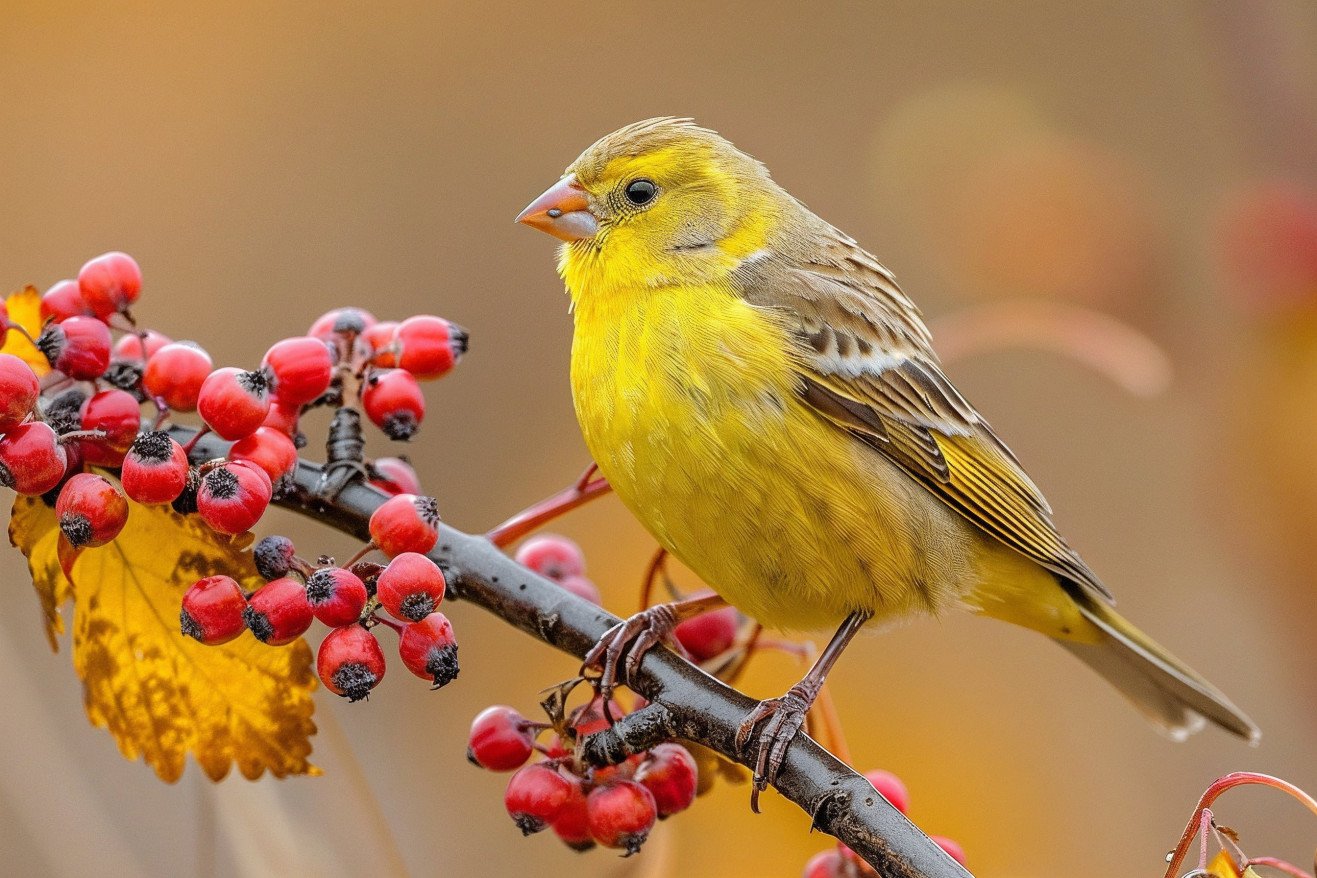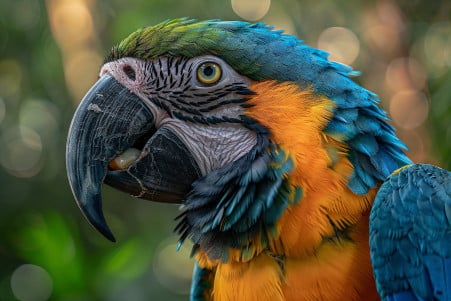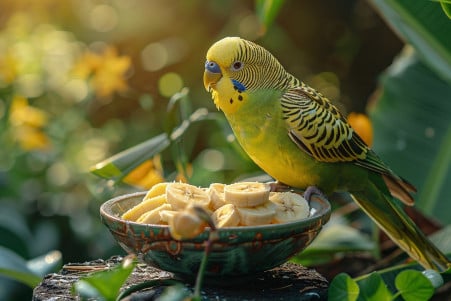What Do Finches Eat? Exploring the Diets of Colorful Songbirds
1 May 2024 • Updated 1 May 2024

What do these small, colorful songbirds eat? Let's take a closer look at the diet and feeding behavior of finches. Finches are granivores that require a well-rounded diet that includes grains, grass seeds, tree seeds such as thistle and nyjer, berries, greens and flowering plants. Different finch species have evolved to eat specific foods that are available in their native environments.
From the general tastes of common backyard birds like the house finch to the more specialized diets of wild finches, we will explore studies that have been done on the wide range of foods that finches eat to support their active lives. By learning about the feeding habits and dietary needs of different finch species, you will gain a better understanding of the importance of offering a suitable, nutritious diet for any birds that come to your backyard.
What do finches eat?
Seed Preferences: What Finches Eat in the Wild
Seeds are the primary food source for finches, and they are a rich source of nutrients and calories that support the birds' high-energy lifestyles. Over time, different species of finches have developed a taste for certain seeds based on the seeds that are available in their natural habitats and the shape of their beaks. Some of the most popular seeds that finches eat include nyjer (thistle), sunflower seeds, millet, and grass seeds, and each type of seed has its own nutritional value.
It's important to choose the right seeds and offer a variety of seeds to make sure that finches get the nutrition they need and to attract a variety of finches to your feeder. For example, the American goldfinch's diet is made up of small, oily seeds like nyjer and sunflower seeds that are easy for the bird's small beak to handle. To attract a variety of finches, Kaytee suggests using a seed mix like their Wild Finch Blend or Ultra Wild Finch Blend, which includes seeds that different species of finches prefer. Making sure that you offer a seed mix that's right for the finches in your area will help you attract these active birds and keep them coming back to your yard.
Fresh Foods for Finches: Fruits, Vegetables, and Greens
In addition to seeds, finches can eat a variety of fresh fruits, vegetables, and greens. The Omlet guide says that finches "aren't really fussy eaters and should enjoy any vegetable you feed them." They suggest feeding finches a range of colorful fruits and vegetables, including apples, bananas, bell peppers, broccoli, carrots, and berries.
While some finch species may have specific tastes, like the American goldfinch's preference for nyjer and sunflower seeds, The Finch Weekly recommends a variety of vegetables, such as kale, spinach, and squash, and fruits, such as citrus, melons, and stone fruits. These foods supply vitamins, minerals, and fiber that can help balance the nutrients in seeds.
To make sure that finches eat these fresh foods, it can help to prepare them properly, like cutting hard fruits and vegetables into small pieces, and to present them in a way that's appealing to the birds. However, as PetMD's finch care sheet explains, fresh fruits and vegetables should only be a small part of a finch's diet, with a nutritionally complete pelleted food as the primary food source.
Finch Feeding and Foraging Behaviors: How Finches Search for Food
Finches have developed a number of foraging behaviors and physical adaptations to help them find and consume their preferred foods in the wild. The Cornell Lab of Ornithology explains that finch beak shapes and sizes are important in this regard, enabling different species to specialize in different seeds, insects, or even nectar.
Social behaviors like flocking and public information can also help finches find and exploit food resources more effectively. VCA Animal Hospitals explains that finches are also able to change their foraging behaviors in response to environmental conditions and food availability.
This knowledge of natural foraging behaviors can be used to help inform the best ways to provide food in a backyard setting. The Paradise Aviary Exotics blog explains that finches' beak shapes have enabled them to adapt to a wide variety of food sources, from seeds and fruits to insects and nectar, and that this knowledge can be used to help ensure that finches have access to the diverse diet they need to be healthy.
Evolutionary Adaptations: How Finches Have Adapted to Different Environments
Finches have engaged in an incredible amount of adaptive radiation, evolving from a single common ancestor to fill a wide variety of ecological niches. The finches of the Galapagos Islands are perhaps the most famous example, with different species evolving beaks of different shapes and sizes to take advantage of different food sources.
Research has shown that there are certain genes that have evolved to control beak shape that have allowed finches to adapt quickly to changes in their environment. Hybridization and gene flow between different species of finches may have also been important in the evolution and diversification of the birds.
The study of finches' evolutionary adaptations has shown how the birds have been able to survive and thrive in a variety of environments. In particular, the pioneering work of Peter and Rosemary Grant on Darwin's finches has shown how environmental factors can lead to rapid changes in finch populations. This leads us to the next section, which will discuss the Grants' work on observing natural selection in the finches.
Finch Feeding in the Wild: Natural Selection and Adaptation
The most famous example of natural selection in action, Darwin's finches have been the subject of long-term studies, most notably by Peter and Rosemary Grant, that have shown natural selection and adaptation in action. Drought and changes in food sources on the Galapagos Islands have caused observable changes in finch beak size and feeding behavior in a single generation. As the PBS explains, larger beaks allowed some finches to take advantage of larger seeds that were available during a time of scarcity, leading to an increase in beak size in subsequent generations.
Beak size and shape also influence mate choice, which may help lead to the development of new species of finches. As a study in Nature explains, these observations show how environmental pressures, food sources, and the evolution of finch populations are all constantly changing and interacting. This evolution is ongoing and can be seen in the finches today. This knowledge of the finches' environment and how it shapes their evolution is key to understanding the birds' ability to survive and thrive.
Conclusion: Understanding the Many Foods and Specializations of Finches
Finches need a diet that is at least 50% seeds, with a mix of both dry and sprouted seeds. According to Omlet's finch guide, the other 50% of their diet should be made up of fresh fruits, vegetables, and a small amount of animal protein.
Finches should not be given too many fatty or sugary foods, as this can lead to obesity. While canary and finch pellets can be nutritionally complete, a seed mix is more likely to be accepted by the birds. However, it's important to make sure that they have access to supplements like cuttlefish bones and mineral blocks, which can help them get the calcium and vitamins they need, especially during molting.
The Galapagos Conservation Trust explains that Darwin's finches, which are only found on the Galapagos Islands, have evolved beak shapes that are specialized to take advantage of different food sources, which has allowed them to occupy a range of ecological niches. This is why it's so important to understand the dietary needs of these birds.
VCA Animal Hospitals points out that wild finches eat a variety of seeds as different plants come into season, rather than the high-fat, nutrient-deficient seeds often found in commercial mixes. This makes it especially important to ensure that these birds have access to a diverse, natural diet that can help them stay healthy and happy.
Whether in the wild or in backyard settings, finches are a testament to the resilience, adaptability, and beauty of the natural world and the diversity of life on Earth.


